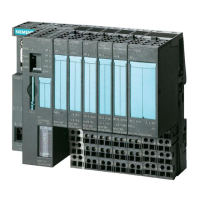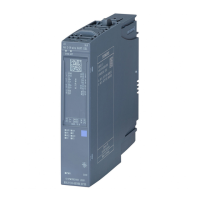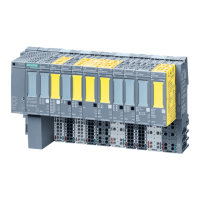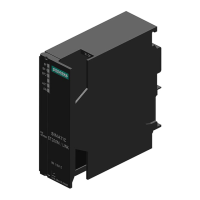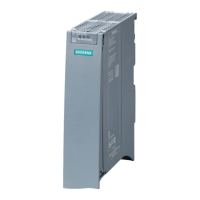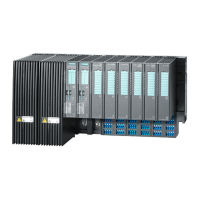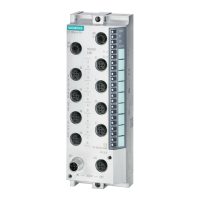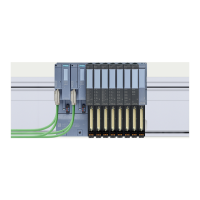Application planning
4.5 Forming potential groups
Distributed I/O system
58 System Manual, 09/2019, A5E03576849-AJ
Properties of the self-assembling voltage bus (L+)
Self-assembling voltage buses have the following properties:
● Maximum current: 7 A
● Rated voltage: 24 V
Pay attention to the derating values depending on the configuration.
The AUX1 bus is not supported in the BaseUnits of the SIMATIC ET 200SP motor starters.
The AUX1 bus is used in ET 200SP motor starters for routing the F-DI signal in BU30-MS7
to BU30-MS10.
Electric shock when operating the infeed bus without touch protection cover
There is a risk of electric shock when touching the infeed bus if you have not fitted a touch
protection cover on the infeed bus on the right.
Always fit a touch protection cover on the infeed bus on the right (article number: 3RK1908-
1DA00-2BP0).
Electric shock when operating a BaseUnit without an inserted motor starter
If you fit a BaseUnit for motor starters without cover (e.g. option handling), there is a risk of
an electric shock when touching the BaseUnit.
Always fit a cover on the BaseUnit (article number: 3RK1908-1CA00-0BP0).
Requirements
Use the following devices to form potential groups with motor starters:
● BaseUnits BU30-MSx
● 3RK1308-0xx00-0CP0 motor starters
Operating principle
Feed in the supply voltage L+ via the BaseUnit BU30-MS1 and BU30-MS3 at the 24V DC
and M terminals.
You can operate the motor starter on a single-phase (L1, N, PE) or a three-phase (L1, L2,
L3, PE) AC voltage system. You connect the required AC voltage directly to the BaseUnits
BU30-MSx (terminals L1, L2(N), L3, PE). You plug the motor starter onto the BaseUnits.
Note
The motor starters' AC power supply is not connected to the AC power supply for the AC I/O
modules (see Chapte
r "Forming potential groups with BaseUnit type B1 (Page 54)").
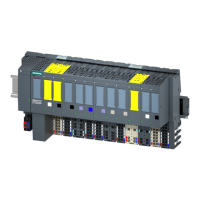
